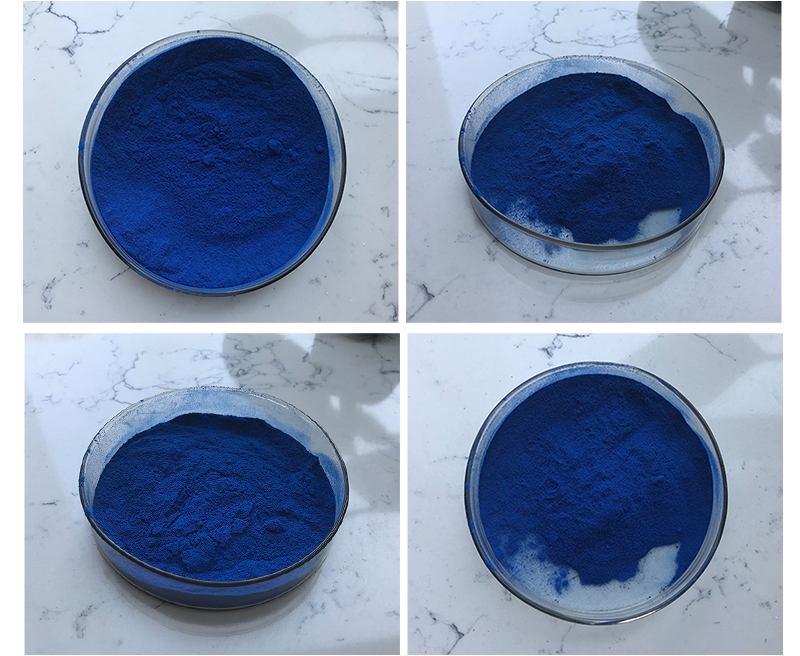Phycocyanin is a natural blue pigment found in cyanobacteria and certain algae. It is a type of phycobiliprotein, which are water-soluble pigments with a protein component. Phycocyanin has gained attention in recent years due to its potential health benefits and various applications. Here’s a comprehensive overview of phycocyanin, including its structure, sources, health benefits, and industrial applications:
Chemical Structure of Phycocyanin:
Phycocyanin is a large molecule composed of two parts: the protein (apoprotein) and the chromophore, which is responsible for the blue color.
The chromophore of phycocyanin contains a chromophore group known as phycocyanobilin, which is structurally similar to the heme group found in hemoglobin.
Sources of Phycocyanin:
Phycocyanin is primarily found in cyanobacteria (blue-green algae) and some specific microalgae species.
Spirulina (Arthrospira platensis and Arthrospira maxima) is one of the most well-known sources of phycocyanin.
Other potential sources include some species of red algae and cryptophytes.
Extraction of Phycocyanin:
Phycocyanin is typically extracted from these algae through various methods, including aqueous extraction and purification techniques.
Extraction methods involve breaking down the algal cell walls and separating the phycocyanin from other cellular components.

Health Benefits of Phycocyanin:
Phycocyanin is considered a potent antioxidant, which means it can help combat oxidative stress and reduce the damage caused by free radicals in the body.
It has anti-inflammatory properties and may support the immune system.
Some studies suggest that phycocyanin may have neuroprotective effects and potential benefits for conditions like Parkinson’s disease and Alzheimer’s disease.
It has been investigated for its potential anti-cancer properties, though more research is needed in this area.
Phycocyanin may also support liver health and detoxification processes.
Industrial Applications of Phycocyanin:
Food and Beverage Industry: Phycocyanin is used as a natural blue food coloring, particularly in products such as candies, ice cream, and beverages.
Pharmaceuticals: It is being researched for potential pharmaceutical applications, including as an ingredient in drugs and dietary supplements.
Cosmetics: Phycocyanin can be found in cosmetics and skincare products, especially those targeting anti-aging and skin health.
Biotechnology: Its applications in biotechnology include use as a fluorescent marker for various experiments and assays.
Nutraceuticals: Phycocyanin is often used as a dietary supplement due to its potential health benefits.
Safety and Side Effects of Phycocyanin:
Phycocyanin is generally considered safe when consumed within recommended levels, but excessive consumption may lead to adverse effects.
Some individuals may be sensitive or allergic to phycocyanin, so caution is advised.
Regulation of Phycocyanin:
Regulatory bodies in different countries have established guidelines and maximum allowable levels for phycocyanin in food and beverages.
In conclusion, phycocyanin is a natural pigment with a range of potential health benefits and diverse applications. While it is generally regarded as safe, it’s important to follow recommended consumption guidelines and consult with healthcare professionals when considering it as a dietary supplement. Ongoing research is likely to uncover more about its therapeutic potential and safety profile.
